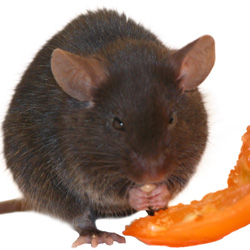 |
|
FeverFacts: 1. When young, mice deficient in transient receptor potential vanilloid-1 (TRPV1) channels exhibit marked locomotor hyperactivity. 2. Pharmacological experiments with TRPV1 agonists and an antagonist suggest that TRPV1 receptors located outside the brain send signals to the brain to suppress locomotion. J Neurosci 31: 1721-1733, 2011.
Image: Chili peppers owe their pungency to capsaicinoids, compounds with TRPV1 agonistic activity. In the photo, a TRPV1 knockout mouse eats a habanero chili (Capsicum chinense), one of the hottest chili peppers, with a reported pungency of up to 300,000 Scoville heat units. The mouse eagerly consumes even the hottest parts of the habanero fruit — the septa and seeds. Cover image (fragment), J Neurosci 31(5); 2 Feb 2011. |
Photography by Andrej A. Romanovsky, editing by Nancy L. Romanovsky |
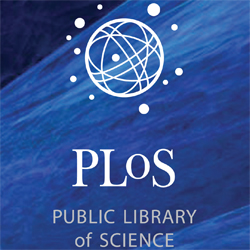 |
|
FeverFacts: 1. Neurons in the dorsomedial hypothalamus and fibers of passage in the paraventricular hypothalamic nucleus are essential for the development of cold-seeking behavior and hypothermia in endotoxin shock. 2. If animals are allowed to use behavioral mechanisms to regulate body temperature, the fever response to bacterial endotoxin occurs even when the preoptic anterior hypothalamus is lesioned. PLoS One 1: e1, 2006.
Image: A logo of the Public Library of Science. The highlighted work is the very first article published by PLoS One, a Public Library of Science journal. |
Free download from the Public Library of Science |
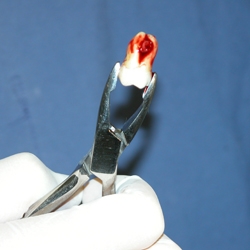 |
|
FeverFact: Compound AMG 517 (Amgen, Inc.), a highly selective TRPV1 antagonist, caused hyperthermia in Phase-I clinical trials. Pain 136: 202-210, 2008.
Image: An extracted molar. TRPV1 antagonists are widely regarded as next-generation pain therapeutics. In one of the clinical trials reported in the highlighted paper, AMG 517 was administered to patients undergoing molar extraction, a surgical cause of acute pain. |
Photo by (and tooth of) Andrej A. Romanovsky |
 |
|
FeverFact: Changes in the expression of a large number of proteins involved in the synthesis, transport, and degradation of prostaglandin (PG) E2 were found during lipopolysaccharide (LPS) fever in rats. The findings suggest that microsomal PGE synthase-1, secretory phospholipase A2-IIA, and 15-hydroxy-PG dehydrogenase may be attractive therapeutic targets in inflammation and fever. Am J Physiol 283: R1104-R1117, 2002.
Image: The expressional pattern of PGE2 transporters and catabolizing enzymes during Phases I-III of LPS fever. Each bar represents the relative expression of a given gene at a given time point (phase) of LPS fever expressed as a percentage of the relative expression of the same gene at the same time point after the administration of saline. Significant down-regulation is indicated by black. |
Figure from: Ivanov AI et al. Am J Physiol 284: R698, 2003, with permission by the American Physiological Society |
 |
|
FeverFact: This study reports a novel activity for the platelet-activating factor (PAF): pyrogenic. It shows that PAF is an ultrapotent inductor of fever. J Physiol 553: 221-228, 2003.
Image: The ground along the Philosopher’s Path in Kyoto covered in yellow ginkgo leaves, December 2006. The highlighted study uses ginkgolide B (BN 52021) monohydrate, a highly specific PAF/acether receptor antagonist, isolated from the ginkgo tree. |
Photo by Andrej A. Romanovsky |
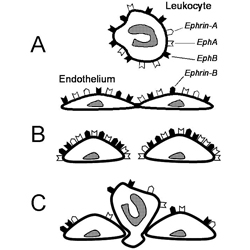 |
|
FeverFact: This is the first in-vivo study showing a massive, coordinated response of ephrins and Eph receptors (both are major players in embryogenesis) to an inflammatory stimulus in adult animals. Physiol Genomics 21: 152-160, 2005.
Image: Changes in the expression of ephrins and Eph receptors and their proposed role in inflammation. Compared to normal conditions (A), the early transcriptional upregulation of ephrin-B2 and EphA2 on endothelial and epithelial cells triggers intracellular events that result in cell repulsion and increase barrier permeability (B). The subsequent transcriptional downregulation of several EphA and EphB receptors on leukocytes and endothelial cells signals events that cause leukocyte-endothelial adhesion (C). |
Figure from: Ivanov AI & Romanovsky AA. IUBMB Life 58: 389, 2006 |
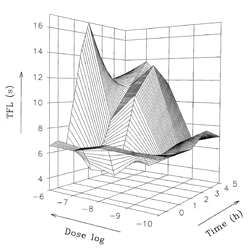 |
|
FeverFact: The sickness syndrome, a nonspecific response to infection, changes during the inflammatory response. Early sickness symptoms include hyperalgesia, motor agitation, and fever. Later sickness symptoms include analgesia, sleepiness, and poikilothermia.
FeverThought: The idea that the sickness syndrome is a dynamic entity is developed. Am J Physiol 271: R244-R253, 1996.
Image: The tail flick latency (TFL) to a noxious heat stimulus (Z axis) plotted against the logarithm (log10) of lipopolysaccharide (LPS) dose (Y axis) and against the time elapsed after the intravenous administration of LPS (X axis) in rats. Note that the unit 1 μg/kg is dimensionless (10-9). LPS causes hyperalgesia (a moderate, short-lived decrease in the TFL) followed by analgesia (a drastic, long-lasting increase in the TFL). |
| Figure from: Romanovsky AA et al. Ann N Y Acad Sci 813: 485, 1997 |
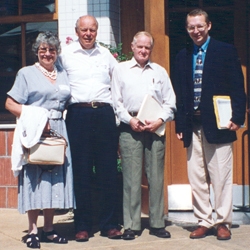 |
|
FeverFact: Hypothermia associated with endotoxin shock involves cold-seeking behavior and a selective decrease in the threshold body temperature for activation of thermogenesis. That shocked rats use behavior to cool themselves suggests that hypothermia in endotoxin shock is brain-mediated. Am J Physiol 270: R693-R703, 1996.
FeverThought: Hypothermia in endotoxin shock is an adaptive response. Ann N Y Acad Sci 813: 733-737, 1997.
Image: The early clinical work on the protective role of hypothermia was carried out in the 1930-40s by Dr. Temple Fay at Temple University, with the engineering support of Dr. George C. Henny. In the photo (left to right): Marion F. Henny (daughter of Temple Fay), David Henny (son of George C. Henny), and Dr. Alfred R. Henderson (medical historian) visiting Dr. Romanovsky in Portland, Oregon (1998). |
| Photo courtesy of Marion F. Henny |
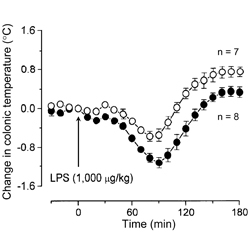 |
|
FeverFacts: 1. In a warm environment, rats respond to lipopolysaccharide (LPS) with fever. Total vagotomy attenuates the fever response to a very low (just above the threshold) dose of LPS, but it does not affect the responses to higher doses. 2. In a cold environment, rats respond to high, shock-inducing doses of LPS with hypothermia. This is the first study to show that vagotomy results in an exaggeration of the hypothermic response to LPS. Am J Physiol 273: R407-R413, 1997.
Image: Effect of intravenous LPS on body temperature of sham-operated rats (open circles) and of rats with total subdiaphragmatic vagotomy (solid circles). Vagotomy exaggerates the hypothermic response to LPS. Three years later, similar observations were made by Kevin J. Tracey’s group and led to the development of Tracey’s theory of the cholinergic vagal anti-inflammatory system. |
| Figure from: Romanovsky AA et al. Am J Physiol 273: R407, 1997, with permission by the American Physiological Society |
 |
|
FeverFact: The fever response to bacterial lipopolysaccharide (LPS) of rats consists of at least three phases. Only two febrile phases were identified before these studies. Am J Physiol 275: R323-R331, 1998. Ibid: R332-R338, 1998.
FeverFact: The fever response to LPS of mice consists of at least three phases. Am J Physiol 289: R1244-R1252, 2005.
Image: An example of a triphasic fever response of a mouse to intravenous LPS (dose indicated). |
| Figure from: Rudaya AY et al. Am J Physiol 289: R1244, 2005, modified, with permission by the American Physiological Society |
 |
|
FeverFact: A new method for determining whether an animal is exposed to subneutral, neutral, or supraneutral thermal conditions is proposed and tested in an extensive study in rats. The method is based on the assumption that, under thermoneutral conditions, an animal uses only those autonomic thermoeffectors that do not impose on its energy or water resources. These economical, first-line responses are skin vasoconstriction and skin vasodilation in specialized heat-exchange organs, such as the rat tail. J Appl Physiol 92: 2667-2679, 2002.
Image: Infrared thermograms of the tails of rats placed in the same chamber maintained at different ambient temperatures: subneutral (upper row of images), supraneutral (middle row), or neutral (lower row). |
| Figure from: Almeida MC et al. Eur J Neurosci 23: 3359, 2006, modified |
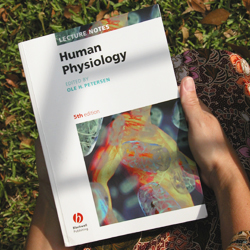 |
|
FeverThought: This is the first textbook chapter that treats the thermoregulatory system as a federation of independent thermoeffectors: without a central coordinator or set point. Chapter 23. Temperature regulation. In: Lecture Notes on Human Physiology, 5th edition, ed. by Petersen O. Oxford, UK: Blackwell, 2007, p. 603-615.
Image: A student holding a copy of the textbook. |
| Photo by Andrej A. Romanovsky |
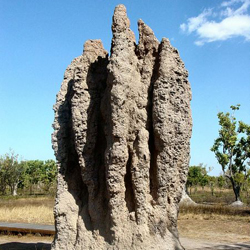 |
|
FeverThought: The regulation of body temperature does not require a specialized neuronal network for integrating temperature signals or for coordinating effector responses, and it cannot be adequately described using a single set point. Am J Physiol 292: R37-R46, 2007.
Image: A cathedral termite mound. Many complex behaviors (such as building a termite mound) require neither a leader nor a global plan for coordination. To fully account for what we perceive as a complex coordination in such behaviors, it is sufficient for each element to operate based on a simple local rule. I think that effectors of the thermoregulatory system are also recruited based on a simple local rule (the relevant set of body temperatures reaching the activation threshold). Effector coordination occurs through a common controlled variable (body temperature) and does not require a specialized central "coordinator". |
| Photo by Brian Voon Yee Yap posted at www.scholarpedia.org |
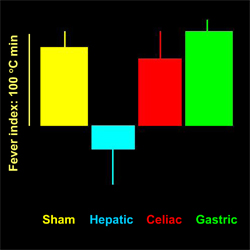 |
|
FeverFact: The hepatic branch of the vagus nerve plays an indispensable role in triggering the fever response to low (just above the threshold) doses of bacterial lipopolysaccharide (LPS). Am J Physiol 275: R63-R68, 1998.
Image: The febrile response to LPS (1 μg/kg iv) is attenuated in rats with selective transection of the hepatic vagal branch, but unaffected in rats with transection of either both gastric vagal branches or both celiac branches. The responses are compared using the fever index (time integral of the deviation of body temperature from a pre-LPS level, calculated over a period of 0-4 h). |
| Figure from: Simons CT et al. Am J Physiol 275: R63, 1998, modified, with permission by the American Physiological Society |
 |
|
FeverFact. The hypothermic response to bacterial endotoxin is mediated entirely by cyclooxygenase (COX)-1. The hypotensive response to endotoxin is mediated by both COX-1 and COX-2. Am J Physiol 297: R485-R494, 2009.
Image: The structure of COX-1 (prostaglandin H2 synthase) complex with the inhibitor flurbiprofen bound to the active site. For the sake of simplicity, the inhibitor is removed from the image. A new physiological role of COX-1 is identified in the highlighted paper. |
| Image posted by user “Cytochrome c” at wikipedia.org |
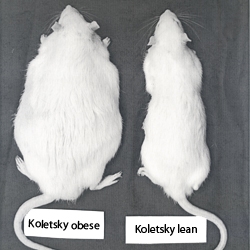 |
|
FeverFact: A new function of the leptin receptor (and of leptin, a fat-derived hormone) has been identified: mediation of the recovery from bacterial lipopolysaccharide-induced hypothermia. FASEB J 18: 1949-1951, 2004.
Image: Two rats with the Koletsky mutation of the leptin receptor gene: lean and obese. When at least one allele is not mutated, a fully functional leptin receptor is expressed, which results in the lean phenotype. When the mutation is homozygous, it results in the complete absence of the leptin receptor and in the obese phenotype. The highlighted study was conducted in obese and lean Koletsky rats. |
| Photo by Andrej A. Romanovsky |
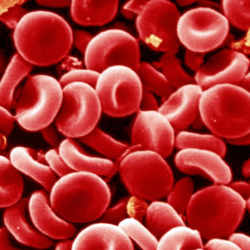 |
|
FeverFact: Lipopolysaccharide (LPS)-induced fever depends on Toll-like receptor 4 (TLR4) signaling. The first phase of LPS fever is triggered via TLR4 in bone marrow-derived cells. The second and third phases involve TLR4 signaling in cells derived from both within and outside the bone marrow. Blood 107: 4000-4002, 2006.
Image: Blood. The study is published in the journal Blood. |
| Credit E.M.Unit, Royal Free Hospital School of Medicine, Wellcome Images, image No. B0000520 |
 |
|
FeverFact: Prostaglandin E2 that triggers fever is synthesized by macrophages in peripheral, endotoxin-processing tissues – not in the brain, as it was previously believed. PLoS Biol 4: e284, 2006.
Image: The photograph shows cyclooxygenase-2 (green immunofluorescence) and the macrophage marker ED2 (red immunofluorescence) in rat lung at the onset of endotoxin fever. |
| Figure from: Steiner AA et al. PLoS Biol 4: e284, 2006 |
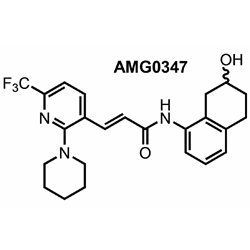 |
|
FeverFact: The tonic activation of transient receptor potential vanilloid-1 (TRPV1) channels in the abdominal viscera by non-thermal factors inhibits the autonomic thermoeffector mechanisms of cold defense and suppresses body temperature. When this activation is blocked (e.g., by pharmacological antagonists of the TRPV1 channel), hyperthermia occurs. This study establishes a physiological mechanism of TRPV1 antagonist-induced hyperthermia. J Neurosci 27: 7459-7468, 2007.
Image: The structure of AMG0347, a potent and highly selective TRPV1 antagonist (Amgen, Inc.) used in the highlighted study. |
| Image courtesy of Andrej A. Romanovsky |
 |
|
FeverThought: Dualism of the thermoregulatory involvement of TRPV1 is proposed. Two populations of TRPV1-expressing neurons have connections with efferent thermoeffector pathways: 1) polymodal, glutamatergic dorsal-root ganglia neurons that innervate the abdominal viscera and 2) higher-order sensory, glutamatergic neurons presumably in the median preoptic nucleus. TRPV1 antagonists act peripherally, on population 1. Agonists act centrally, on population 2. Pharmacol Rev 61: 228-261, 2009.
Image: A different kind of dualism is symbolized by the weather vane over Bolshoi Palace in Andrej’s native Peterhof, near St. Petersburg, Russia. The two heads of the Imperial eagle signify Russia’s ambitions towards both East and West. (Interestingly, the eagle of Bolshoi Palace has actually three heads, but only two of them can be viewed from any particular location on the ground.) |
| Photo courtesy of Gina Morken |
 |
|
FeverFact: TRPV1 antagonists, next-generation pain therapeutics, cause hyperthermia in laboratory animals and humans. This side effect is a major obstacle for further development of these drugs. We show that hyperthermia is caused by those TRPV1 antagonists that block activation of the TRPV1 channel by protons (high acidity) and possibly by chemical ligands, but not by heat. We suggest to concentrate the drug development effort on compounds that do not block TRPV1 activation by protons. Such compounds will not increase body temperature but may still block pain caused by heat and perhaps by chemical ligands. J Neurosci 30: 1435-1440, 2010.
Image: Composite artwork by Darren Hopes (fragment). TRPV1 antagonists cause dangerous hyperthermia in humans. Can it be avoided? |
| Credit Darren Hopes, Wellcome Images, image No. B003706 |
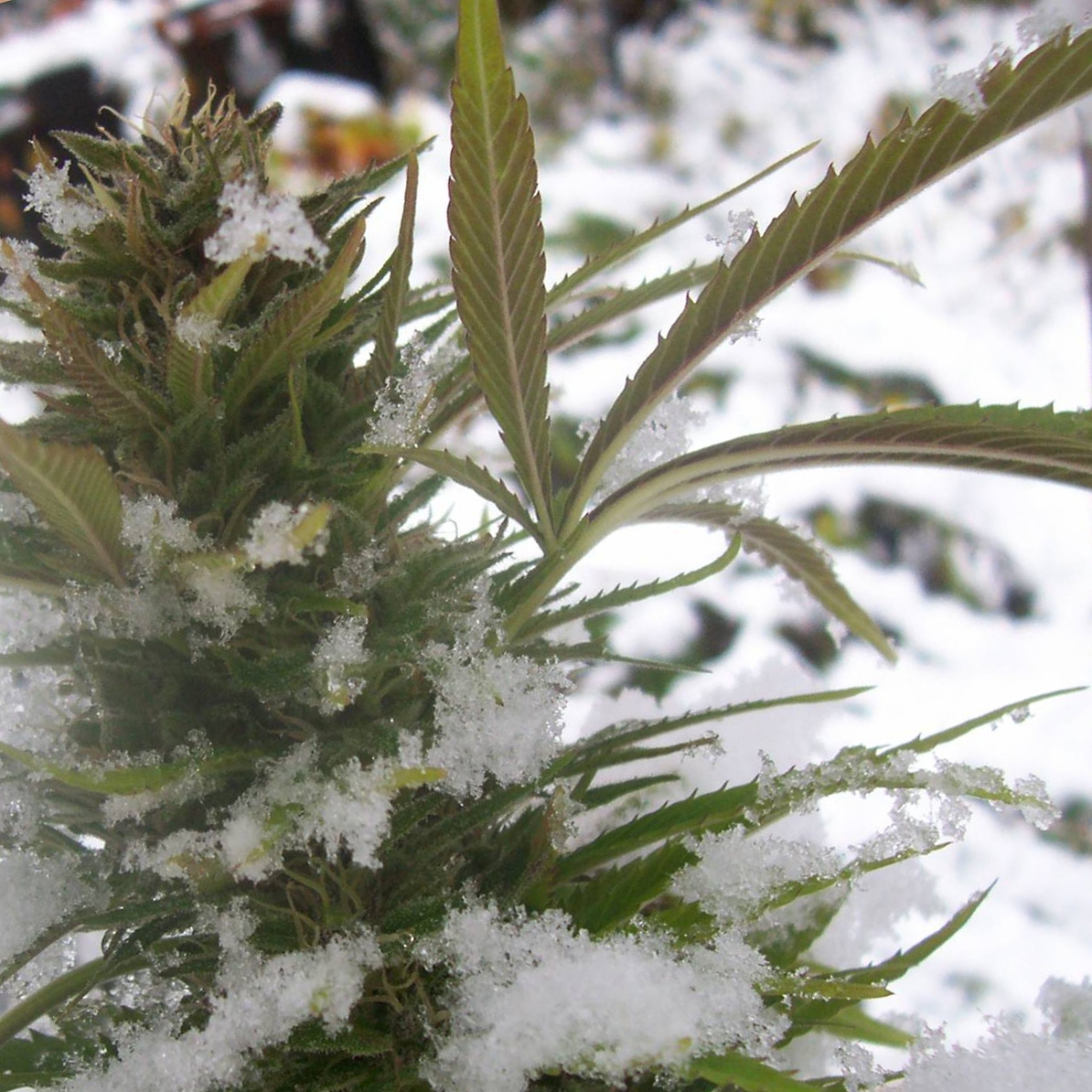 |
|
FeverFact: This study reveals a novel, critical role of brain cannabinoid-1 (CB1) receptors in lipopolysaccharide-induced hypothermia. Brain CB1 receptors may constitute a new therapeutic target in systemic inflammation and sepsis. J Physiol 589: 2415-2431, 2011.
Image: Cannabis in the cold. |
| Photo courtesy of dmtcorrey |
 |
|
FeverFact: FeverFacts are biological laws discovered by fever researchers. Fever researchers have shown definitively that ladybugs like swimming (personal communication).
Image: Andrej with his ladybug Silvia (5-month-old). The first swim. |
| Photo by Nancy L. Romanovsky |
Free PDFs of the publications highlighted on this page can be downloaded or requested from the Publications page. |



